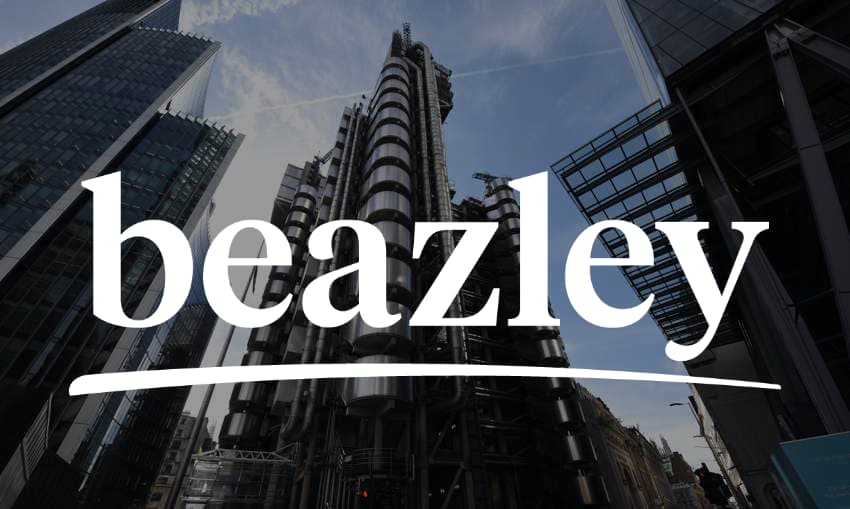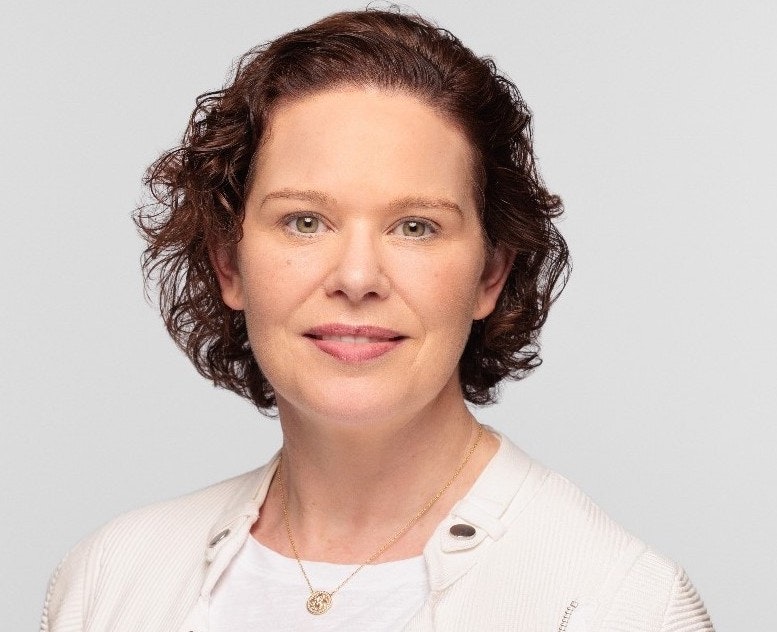Sonya Iovieno knows European tech’s secrets. As head of venture and growth at HSBC Innovation Banking, where she works with thousands of VCs, startups and scaleups in the UK and Nordics, she has a view on who’s done an undisclosed down round, who’s been trimming headcount and who’s set up a “hunting line” for future acquisitions.
And she also knows what it’s like to go through a merger, after her organisation, formerly Silicon Valley Bank UK, was acquired by HSBC for a mere £1 after the dramatic collapse of its US parent company in March.
Iovieno joined us this week for a long-form interview on Startup Europe — The Sifted Podcast to share her predictions for 2024 and her experience of the tumultuous weeks of this spring.
Listen to our full conversation here — or read our lightly edited highlights below.
It’s been a pretty wild few years in startup Europe: big boom, slow bust. What is your best prediction of what next year will look like?
If you asked me that question in the summer, a lot of people were saying maybe by the end of this year, or Q1 next year, they thought the market would start to really open up again. But I think that has changed. It’s clear that interest rates, while they may be at the peak, are staying higher for longer. And even though there’s lots of capital out there, and there’s no pressure on VCs to deploy, I think now they’re starting to say it’s probably going to be towards H2 next year when they really start to open the taps.
But that said, we can already see VCs in the US and in Europe start to deploy new rounds to the best growth-stage companies at Series B and C, pretty much exclusively in hot areas like enterprise software, climate tech and AI, as well as life sciences.
A new PitchBook report out this week shows that valuations are still coming down at the earliest stages. Do you think we’re almost done with valuation downsizing — or is there more to come?
Not all funding rounds — especially internal rounds, particularly if they’re done with a convertible loan note rather than straight equity — have been made public. And they certainly were mostly down rounds. So I don’t think we’re done at all; companies have been supported for quite a long time with internal rounds by VCs, and that’s going to take a lot of companies through to Q1/Q2 next year. And then, when they do go to market, there will be more down rounds.
But it’s a mixed picture. Some companies certainly did take their medicine over the last couple of years and have been very, very focused on unit economics driving towards profitability, and at the same time investing in the right areas for continued growth. Some companies are still going to have that moment of realising that valuations are not where they want them to be, while others are definitely well positioned to benefit from an up round.
VCs have been supporting almost 100% of their portfolio companies with additional equity in one form or another, but I think those days are over. They’re going to be very judicious about where they put their capital, so it’s very important for founders to know where they sit within the ranking of the portfolio of their investors, and those that are in the bottom 25% really will need to look elsewhere, probably, for additional capital.
Founders should be doing their research to understand what good metrics look like for their type of company at their stage in this market. And, if they have a number of different areas where they’re falling below whatever the standard is, they certainly need to be looking at what levers they can pull in their business to try to tighten the performance. And to start talking to other external investors and get feedback on their company.
What levers have startups already been pulling to tighten up?
If you go back to the heady days of 2020 and 2021, it was pretty normal for a startup to raise a round and then instantly expand into five different countries at the same time. We’ve seen them pull back and really focus on core markets and go deeper in core markets, where they already have a solid footprint, where they’ve got the ability to prove out those unit economics and where they’ve got loyal and sticky customers that they think they can continue to grow and expand with.
Headcount has been trimmed, too; developers, but also sales staff, where the focus has been less on top-line growth and maybe more on unit economics.
What do you think we’ll see with regards to M&A in the coming months?
We’ve been busy over the last 12 months putting what you call “hunting lines” — debt M&A lines — in place for growth-stage companies. But we haven’t really seen them used very much so far. My reading is that we haven’t really had a meeting of minds between those companies and those founders who haven’t been able to grow into their previously high valuations accepting that the valuation landscape has changed. And so they haven’t been able to come to the table for any sort of a deal, whether it’s an equity deal, or otherwise.
If you’re a founder in that position, the best thing you can do is start to explore the market before you’re down to your last few months of cash runway to maximise your negotiating position.
We do expect to see more M&A next year. There’s a lot going on in enterprise software and also some of the B2C companies, despite the fact that B2C hasn’t been the flavour of the month recently from an investor perspective. I think we’ll see quite a bit of consolidation in cyber — there’s a lot going on there and some good quality assets that maybe haven’t optimised the investment that they got. I also expect to see quite a lot of activity in fintech and open banking and related services.
What are VCs’ biggest struggles at the moment?
They’re clearly very, very focused on valuations and making sure that they are optimising those companies in their portfolio and giving them the right guidance. And that’s not as easy as it sounds. 12 months ago, the guidance was very clearly: “Focus on your unit economics, focus on preparing your company for driving towards profitability.” Now, that has changed a little bit; it’s “Continue doing that, but we also need to see growth because that’s how you’re going to attract the next round if you’re up for another equity round or sale.”
Heading back to March… how did it feel going through the rollercoaster that was Silicon Valley Bank’s collapse?
It was a pretty unique culture and vibe in SVB; we were a high-growth company, we were exceptional and unique in our market and we understood our markets really well. As someone who was running a business within the bank, I can tell you that the balance sheet, in terms of the portfolios, was solid as a rock. And we were really pleased with how it was working. So it came absolutely out of the blue. In some ways, we’re still in shock and still trying to understand how a very basic mistake in terms of investment was made by experienced board members and advisors.
It felt devastating at the time because, as a culture, we’re very client-focused and everything that we do is about, “How do we help founders and our companies scale? How do we optimise what they want to achieve?” So then to let them down and have them as stressed and concerned as they were… I would say every single member of our team took it personally and I was really proud of how the team reacted. We were on the phone morning, noon and night over the whole period with our clients, putting aside our own personal circumstances and concerns, to get them any information that we had and advise them.
It obviously worked to our favour that we did have such a strong balance sheet; HSBC was able to look in, and with a fairly minimal amount of diligence over the weekend, have the confidence to bid for the organisation. And they’ve been delighted with what they bought for a pound and the dividends they’ve already had.
Do you think SVB should’ve encouraged clients to diversify their treasury more?
We worked really hard with our clients at SVB to make sure that they were taking responsible actions. We developed a template treasury policy that we shared with our clients pretty much once they raised a Series A, and one of the clear callouts was that they should diversify their cash. To the extent that clients did engage in that conversation, we were able to recommend other providers to them. But ultimately, there’s only so much you can do in that regard. We don’t sit on the boards and we’re not a formal regulated adviser to our clients. It’s a board decision to make.
What’s next for your team now you’re part of HSBC?
HSBC thinks globally; they didn’t just buy SVB UK to have a UK bank. We’re already expanding; we’ve got teams in the US, Israel, Hong Kong, Denmark and Sweden… It makes sense for us to be where the hubs are, where you have that confluence of founders, supported by governments, active VCs — and not just local VCs, but international VCs all spending time there. I’m not going to give our strategy away, but you can take out a map of Europe and a PitchBook report and probably figure it out.
Next year, we’ll optimise what we can do at HSBC because they’re a much larger bank. We’ll be bringing more of their banking products onto the platform so our clients can access those as well; different types of accounts and different jurisdictions.
We’ll expand our offering in asset management, working closely with the HSBC investment bank and wealth management teams, to provide the right kinds of products to our clients as they scale personally as founders or investors. That used to be a constant source of inbound inquiry at SVB — and it’s really important, because for most private banks, they need to see you’ve got cash on the balance sheet. And that’s not where wealth is held by these founders. They’re obviously encouraged to reinvest in their own businesses and take equity — they’re taking high risks — and so it’s important they can leverage that in some sense. That’s really what a private bank for entrepreneurs has to provide.







































